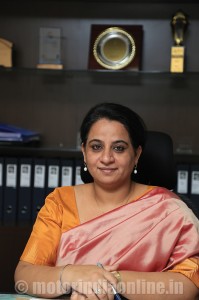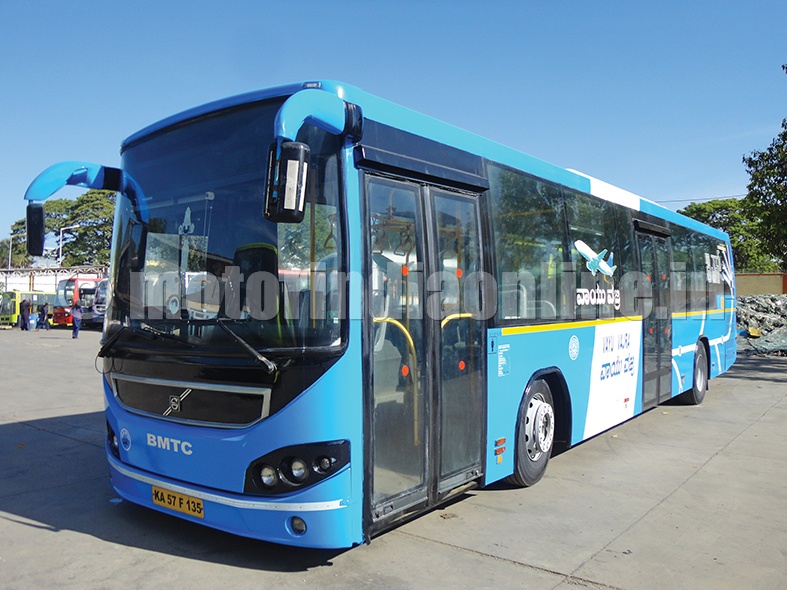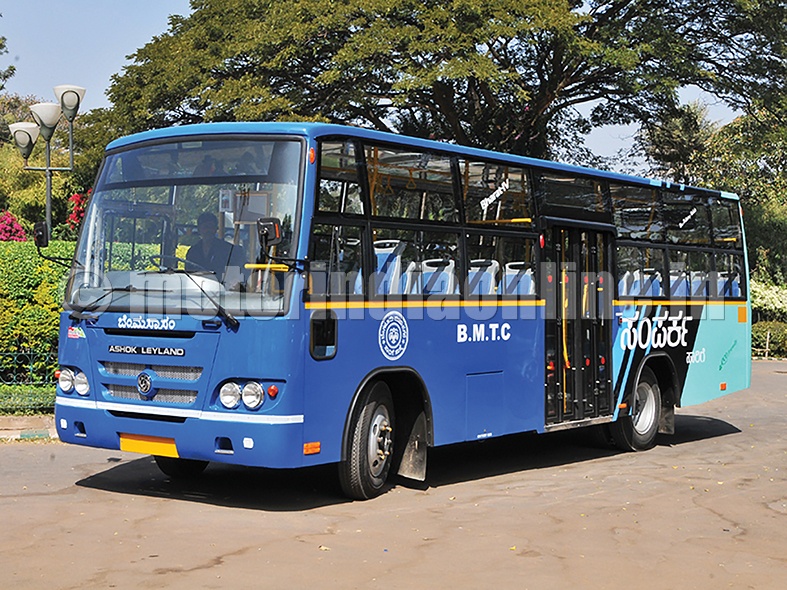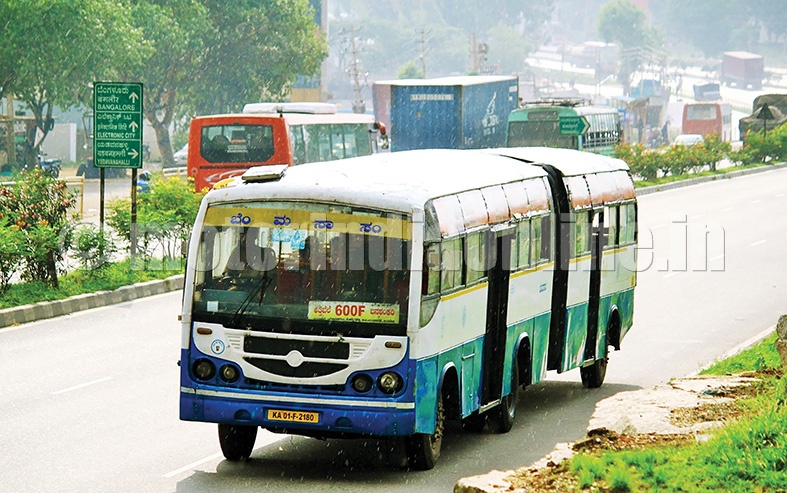Bangalore Metropolitan Transport Corporation (BMTC) has always been a frontrunner in public transportation and a benchmark among all STUs in India. Be it introduction of premium class city services or branded regular buses connecting different pockets of the city, BMTC has connected well with commuters with a consistent ambition to propel ahead. A well-managed STU, despite limited support from the State Government for funding, the Bangalore outfit is proactive in adopting new technologies and introducing commuter-friendly initiatives, many of which have encouraged people in the city to shift from private vehicles to public transportation. We had the privilege of meeting Dr. Ekroop Caur, Managing Director, BMTC, for an exclusive interaction during which she was happy to share details of her firm’s progress and recent developments.
Excerpts:

BMTC has been known for its forward-looking approach. How are you performing at present, and how do you ensure you stay ahead of other STUs?
BMTC has a fleet strength of 6,500 vehicles with 10 per cent of them being premium Volvo services, which is unique to us. We were the first to introduce premium class buses in city services, and we continue to maintain the lead. The reach of our fleet in terms of both the coverage and the total number of people carried every day is way beyond other STUs.
We were one of the few STUs in the world which has made profit for several years. Though the last three years have been challenging, we are already in the process of recovery. This year we are hoping to break even and cover up our losses and liabilities incurred in the last few years.
What is your cost per km and what are your top three expenses?
Our cost per km is Rs. 43, including all factors. Salary is the biggest item of expense, followed by high speed diesel (HSD), and the motor vehicle tax taking every 5.5 per cent of our earnings goes to MV tax. The reason we are doing well is that we are a traditionally well-managed STU with a lean staff-to-schedule ratio of 5.8 per schedule. Also, we are completely dependent on our ticket box revenue and are not supported by the Government by any means. On the contrary, we support some of the Government commitments such as student passes in which 50 per cent is given by the Government and 25 per cent is borne by us. We have passes for senior citizens and differently-abled passengers as well, and this way we give back a lot to the people. Basically, our efficiency in terms of healthy staff-to-schedule ratio and a formula-based ticket fare keeps us financially strong.
How is the fleet mix and what is the average age of your vehicles?
We have a total fleet size of around 6,500 vehicles, of which around 700 are premium Volvo buses with the rest being a mix of semi-low floor and high floor buses. We had a middle segment AC bus range which was removed while we introduced midi feeder buses.
We have a scrapping policy of 10 years, and on an average 10 per cent of our buses are scrapped every year. The average age of our fleet will be somewhere around five years.
Do you have any expansion plans? Could you highlight some of your new initiatives?
We are already operating around 6,500 buses and we intend to increase it once our jurisdiction increases. Earlier, it used to be only BMP – Bangalore Mahanagara Palike and Palike itself has increased over a period of time to BBMP – Bruhat Bangalore Mahanagara Palike as a result of which we are covering up to 25 kms from the periphery of BBMP. So with this we are already touching all important taluk headquarters in the vicinity of Bengaluru and with so much latent demand we are also trying to increase our fleet.
Coming to the new initiatives, we are automating in a big way by introducing electronic ticketing machines. This is quite different from what other STUs have and is a kind of online system where every transaction is recorded and we get feedback on ticket sales immediately. And, of course, we are bringing in a cashless ticketing system by introducing smart cards by the end of this year wherein commuters can just display their cards on the sensor. This will be a big relief to the conductors and will also avoid pilferages and change issues where the commuters are expected to tender exact change for a ticket.
We have also piloted GPS fitment and intend to complete the same across our fleet by the end of September. Once this is done, it will be integrated into our mobile app, and we will have real-time fleet tracking.
As a safety measure for women passengers, we have introduced the ‘Durga’ alarm which is currently under trial. In addition, around 500 regular buses have been fitted with cameras which will be further scaled up.
What are your plans to reduce carbon footprint? Are you looking at using ethanol-blended diesel in your buses and ethanol-powered buses like the Green Bus from Scania?
Since 2009, we have inducted only BS IV buses, and almost 50 per cent of our fleet is currently BS IV. For other buses, we do mandatory emission checks once in two months though the norm calls for checks only once in six months. We are exploring the possibility of introducing CNG vehicles.
We are also planning to upscale the fleet strength of ethanol-blended diesel buses from few to little more. With respect to the Scania ethanol bus are in touch with them but are yet to study the operation completely.
You were the first to perform trial runs of BYD’s electric bus as well as the UD city bus. What are your views on such new buses?
Electric buses are going to be the future, and we will need the Central Government’s support for purchasing these buses because the capital cost is so high that the overall expenditure, in spite of very low running cost, even when run for 15 years, is very high and makes it very expensive to operate.
The UD city bus is a middle segment AC bus which is low-floor and air-conditioned, but not as premium as a Volvo bus. Though we have not quoted a price for it yet, we expect it to be less expensive than Volvo and hence the ticket price will also be lesser. With respect to performance, it is too early to comment as trial runs still continue.
What do you say about the performance level of vehicle manufacturers? Do you have any specific expectations from them?
We have actually modified our tenders, as a result of which we will be looking at the lifecycle cost. In fact, we will be calling for tenders with this clause soon, and that would in some way increase and ensure adequate performance parameters for the manufacturers. The lifecycle cost for operating the bus for a period of 10 years along with the cost of the bus will be considered for choosing the L1 criteria.
We wanted to have the spare parts price for BS IV buses reduced from the current level. Of course, they cannot be reduced beyond a point, but at least the availability of parts on-time is what we require. Non-availability of parts affects our performance, and with a limited supplier base and two of the major manufacturers holding around 86 per cent of bus market share, it is majorly supplier-driven. When competition increases, prices will come down, and choice for buyer increases and our bargaining power increases. So our plan is for price reduction and timely availability of parts.
We understand that you have identified specific pockets within your jurisdiction and run buses branded with specific names? Can you share some details on this move?
It is actually a realignment of operations, and the nature of operation is in itself very different when we go for such kind of buses. For example, we have in a big way introduced our ‘Big Trunk’ brand of buses and have identified 12 corridors for operation. We have already introduced them in four corridors and we could see a substantial increase in revenue. This is one of the main reasons why we run these buses that are visually distinct and appealing for passengers. We will also introduce more feeder services for the metro and will keep increasing the same as and when the metro service expands.
Lastly, how is the response to your unique Bus Day initiative?
We are observing Bus Day on the 4th of every month. In the last few months, we have intensified the effort by increasing the schedule over and above what we have been doing earlier. We also send our team to a particular area and get a lot of feedback from the residents and NGOs to try and resolve the problems during Bus Day. This is one of the major initiatives by which we remain connected with the commuters.


